Conservation of a tastevin

The Conservation team was recently tasked with the treatment of a silver cup that belonged to a prominent Tasmanian, with links to a historic French fraternity. Read on to find out more about this unusual item and how it has been conserved.
The cup in question is an embellished shallow silver dish known as a ‘tastevin’. If you have a rudimentary familiarity with French, you may be able to guess it’s purpose – tasting wine. This kind of cup is used by sommeliers and wine-producers to assess burgundy wine. This tastevin bears the emblem of a group known as the ‘Confrèrie des Chevaliers du Tastevin’ or the ‘Fraternity of the Wine-Taster’s cup’, which was established in 1934 at the Château du Clos de Vougeot in Burgundy, France. Confronting plummeting wine prices in the midst of the Great Depression they declared
“Wines of a quality such as ours are a cause for joy and optimism. So enough moaning! Since our cellars are full to the brim, let’s empty them – and we can invite our friends to help us!”
Confrèrie des Chevaliers du Tastevin, https://tastevin-bourgogne.com/
The Chevaliers’ goal was to reinvigorate the Burgundy region and celebrate its wine, drawing on 17th and 18th century traditions of Bacchanalian fraternities. They hold banquets in celebration of good food and wine, and pass judgement on the quality of the vintage.
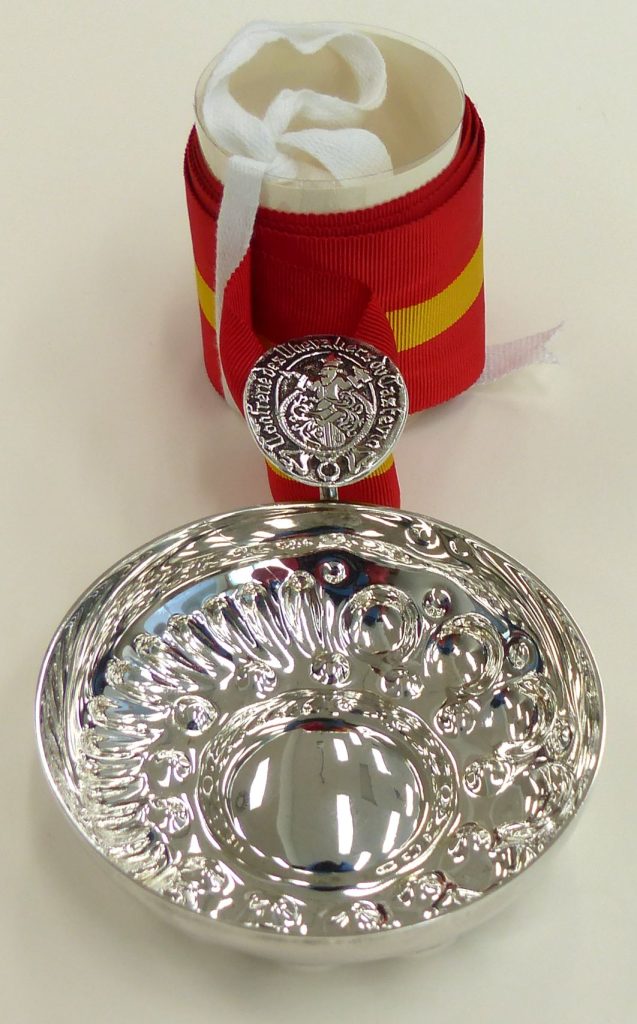
Tastevin cups can be either solid silver or silver-plated and have a raised design which allows the appearance and colour of the wines to be appreciated. This tastevin is attached to a ribbon in the red and gold colours of the fraternity, designed to be worn around the neck of the sommelier, ready to swirl, sniff and sip in a second.
So why does the Tasmanian Archives have a (now) shining example of an obsessive wine lover’s knickknack? This tastevin came into our collection along with the archives of Claudio Alcorso (1913-2000). Alcorso was an industrialist and winemaker who pioneered the Tasmanian winemaking industry.

Born in Rome, Italy, Claudio Alcorso emigrated to Sydney in 1938 and established Silk and Textile Fabrics (Tasmanian Archives: NG3685), the beginnings of a textile business that later became the home furnishings brand Sheridan. He enlisted in the RAAF but when World War 2 broke out he was interned as an ‘enemy alien’. After the war, he transferred his factory to Derwent Park, Hobart. He was a patron of the arts, involved in the Australian Ballet, Australian Elizabethan Theatre Trust, Tasmanian Arts Advisory Council, Sullivans Cove Development Authority and chairman of Opera Australia. He was an environmentalist taking an active stance in 1982 in the Franklin River protest. Among his many interests and activities, wine was a central passion. In 1958 Alcorso planted 90 Rhine reisling cuttings at his Moorilla estate and began the journey towards producing his own wine (Cahalan, p.125). His was only the second estate in Tasmania to produce winemaking on a commercial scale.
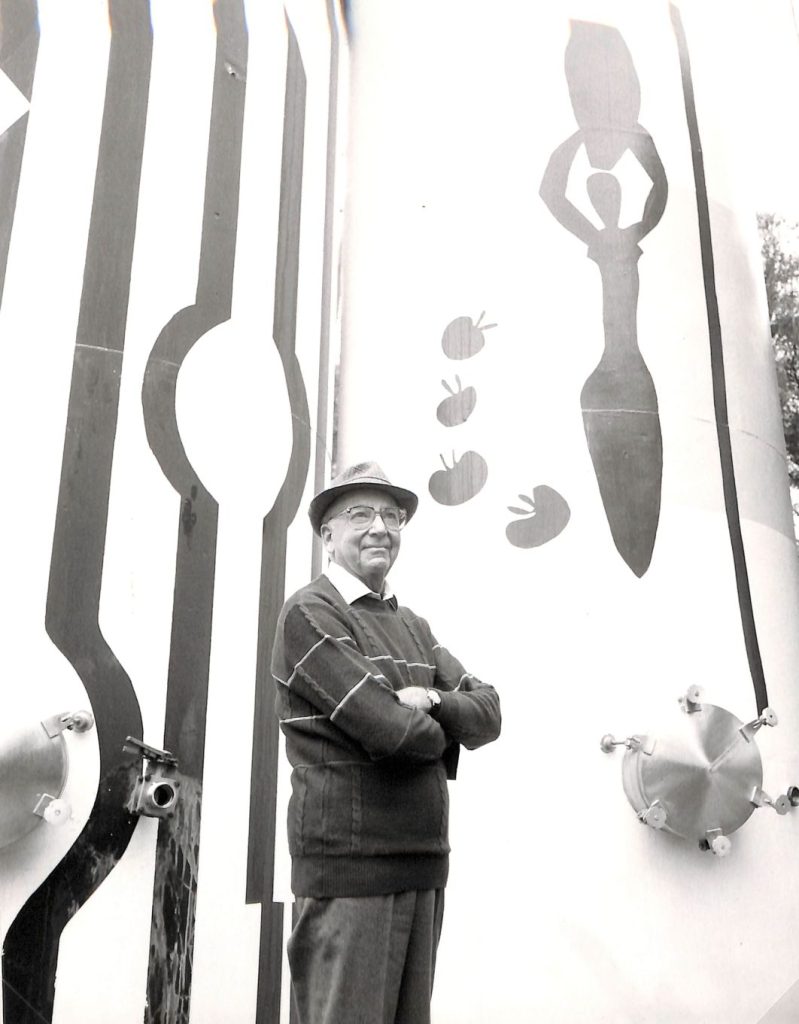
The tastevin came to the Tasmanian Archives among the documents, film and photographs donated to by the Alcorso family in 2009. It is unusual for objects to be accepted as part of an archival deposit, but exceptions can be made when an object fits within the context of the records and contributes to the story they have to tell. In this case, Alcorso’s membership of the Confrèrie des Chevaliers du Tastevin reveals something of his life. The group is serious about food and wine, but with an air of fun and celebration. Descriptions of Alcorso’s character suggest that he embodied that spirit. He loved wine and was passionate about its creation and enjoyment. He was also well loved and respected – a generous and gregarious man with a great appreciation for the finer things of life.
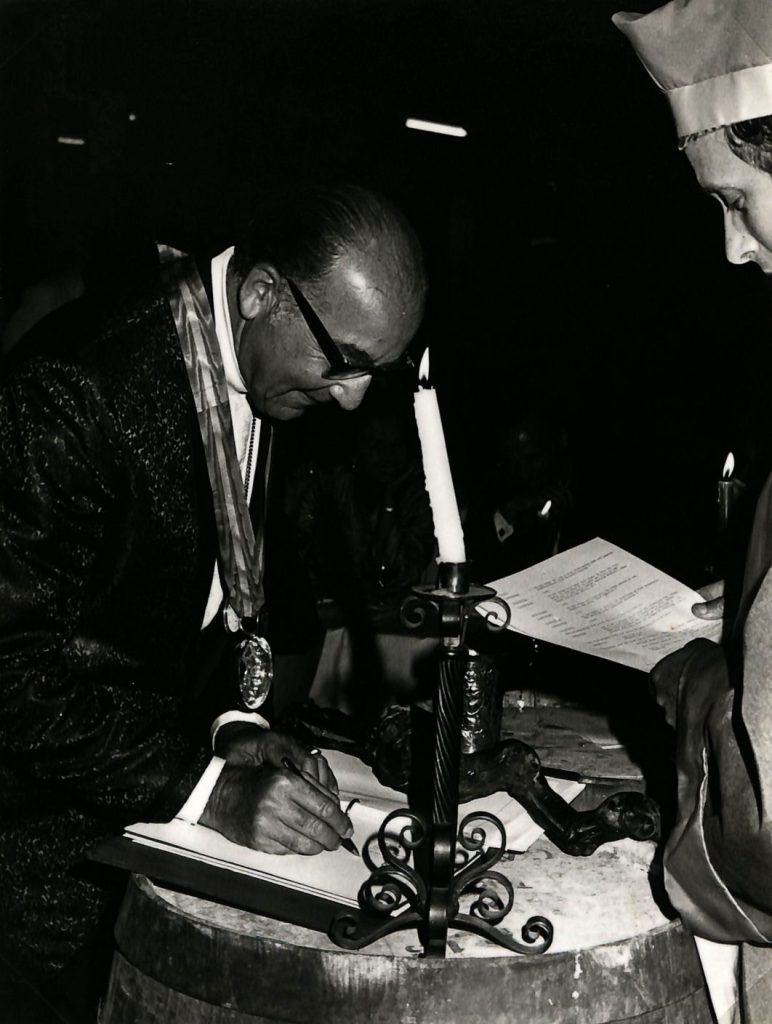
The tastevin or wine tasting cup came from Community Archives to Conservation for custom storage. The silver cup was beginning to tarnish and its red and yellow braided ribbon needed smoothing out. Gaynor Tollard (Conservation Technician) treated the cup before fabricating a special storage box.
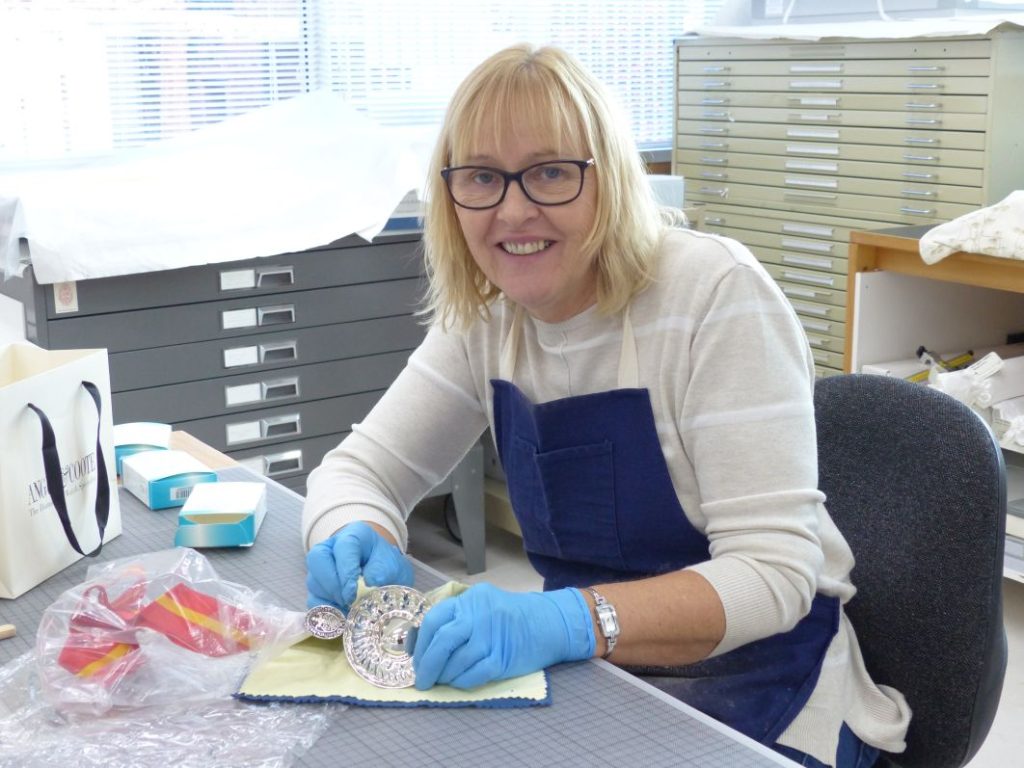
Dust was cleaned from the cup using a very soft brush, then it was washed in deionised water and pure soap and thoroughly rinsed.
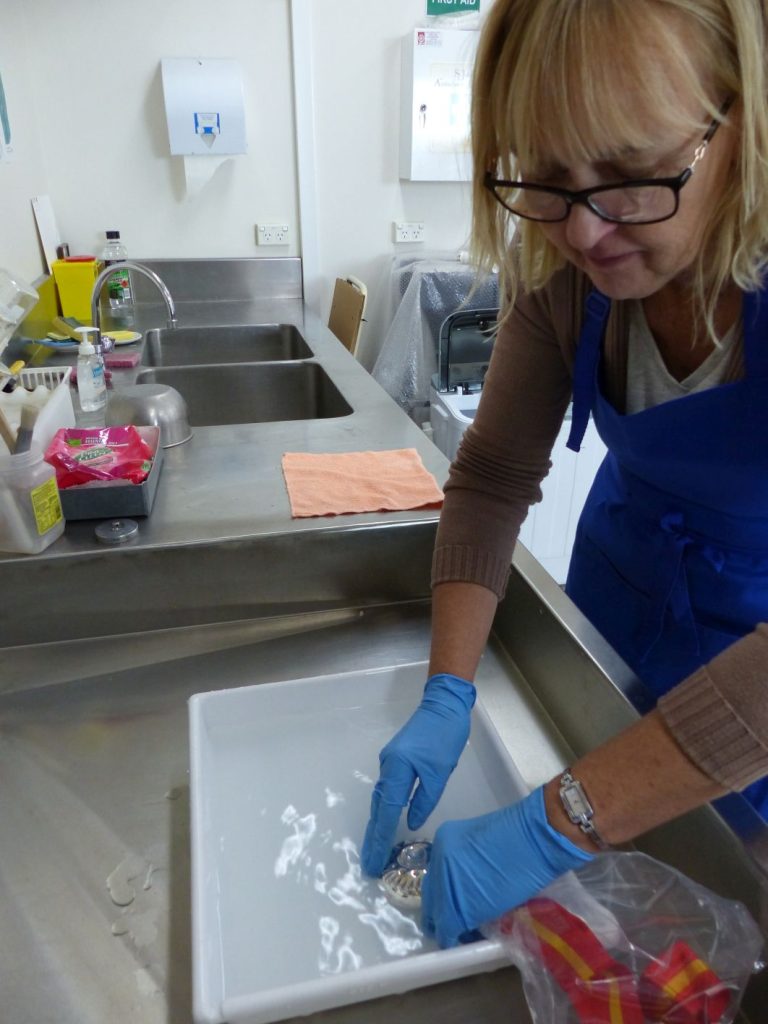
The ribbons were protected during washing. The cup was then dried with a soft cloth and polished with a silver cloth. The ribbon was gently ironed.
The item was photographed by our digitisation team, so that a high-quality image could be placed on the box to inform us of the contents and deter unnecessary handling.
The cup was then wrapped in Intercept film which was heat-sealed on three edges and taped on the fourth.
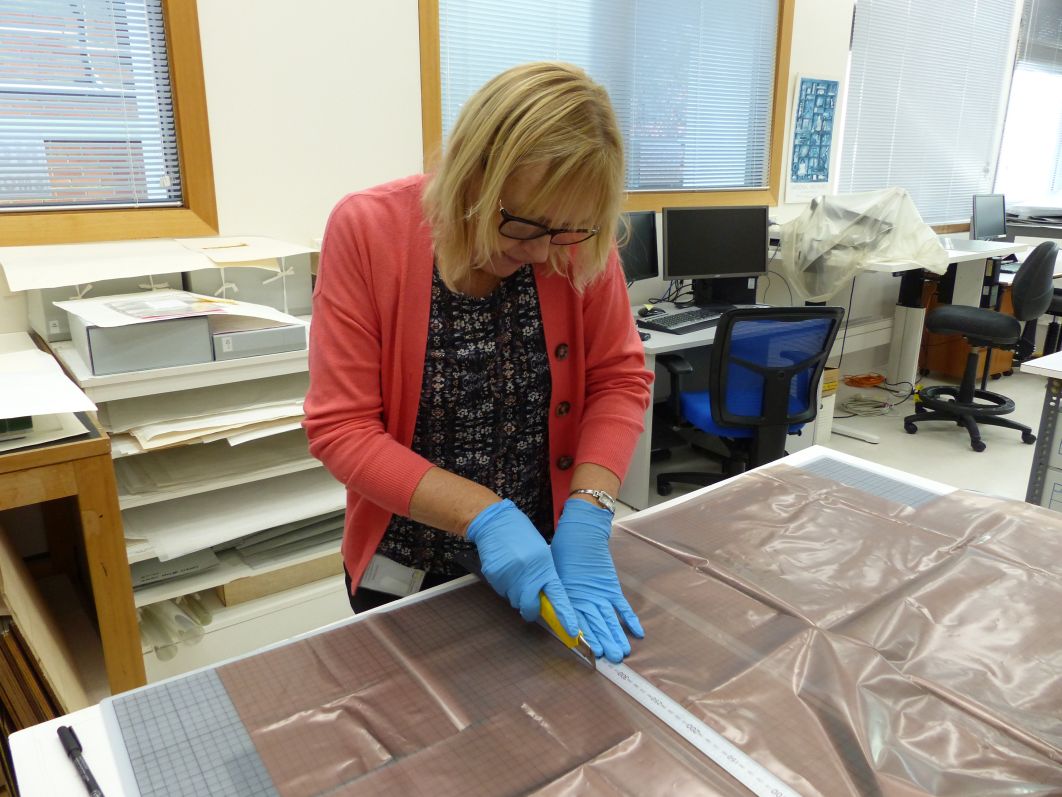
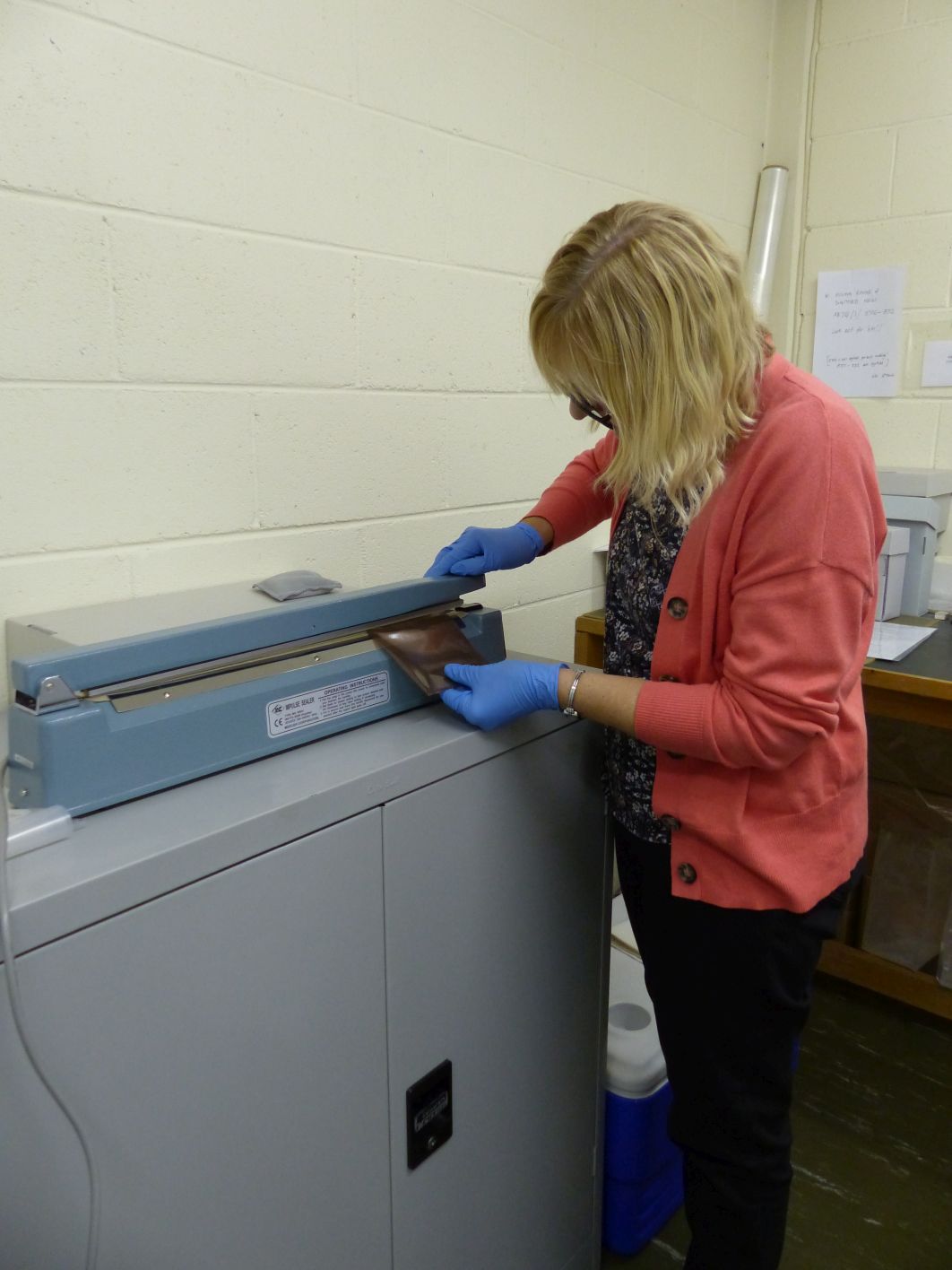
Custom storage was made by making a support cylinder for the ribbon from archival paper; a foam core and Etha foam base which fitted inside a custom-made archival corrugated board box with lid.
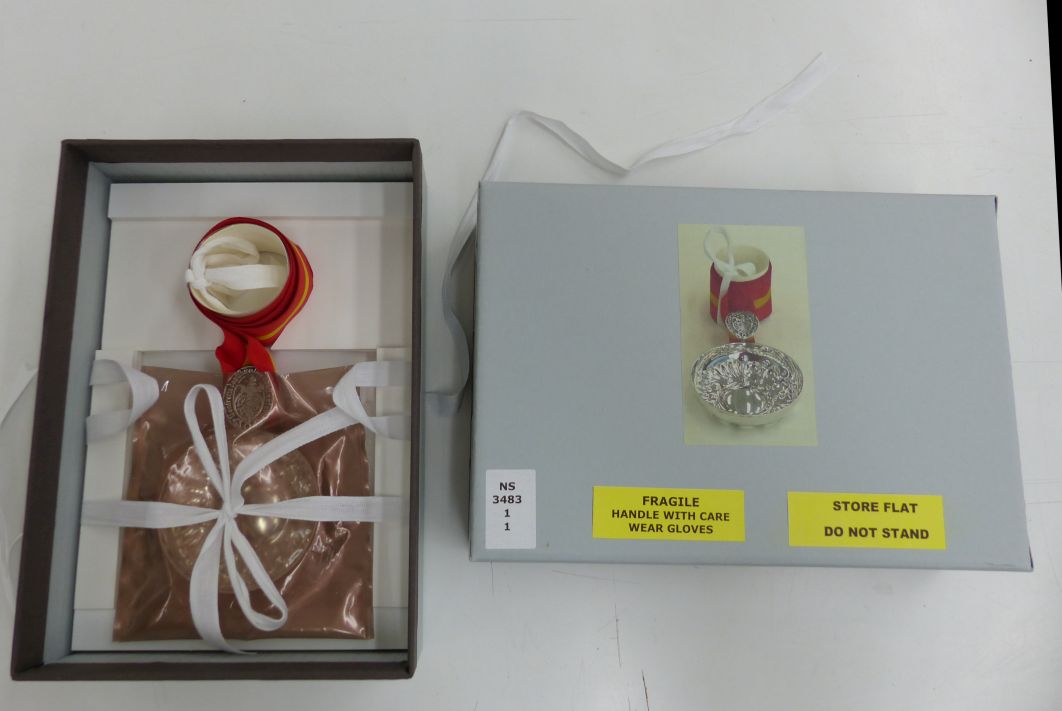
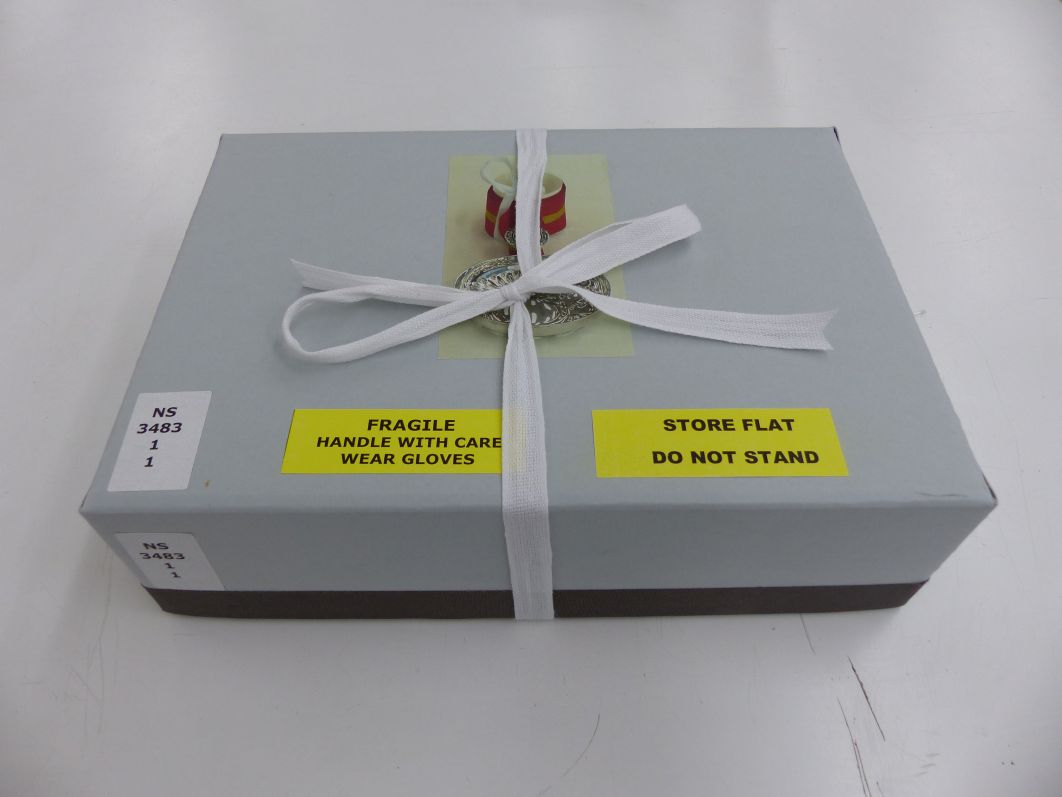
Every object has a story to tell. This cup’s polished surface reflects years of swirling, sipping, and savouring the richness of aged vintages. It cradles the echoes of celebrations, whispered secrets exchanged over elegant dinners, and the quiet communion of kindred spirits under starlit skies. A vessel of memories, it reminds us that every object has a story to tell, if we pause to listen.
References and further reading
Alcorso, Claudio, 1993, The Wind You Say, (Pymble, NSW : Angus & Robertson)
Confrérie des Chevaliers du Tastevin, ‘History’, https://www.tastevin-bourgogne.com/en/history
New York Times, (1986), ‘Fraternity gathers for love of wine’, https://www.nytimes.com/1986/06/08/nyregion/fraternity-gathers-for-love-of-wine.html
Sheridan, ‘Our Founder’, https://www.sheridan.com.au/our-founder
Talia, Joseph, 2000, The Alcorso Story.
Tasmanian Archives: Claudio Alcorso and Family, NG2242
Tasmanian Archives: Silk and Textiles, NG3685


What an amazing story!
What a full bodied story, worth swishing and swirling across the net.
Great to hear the story Stephanie but also the processes used to restore this item and protect it for future generations, thank you.